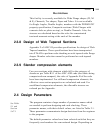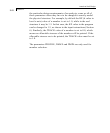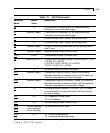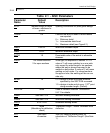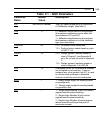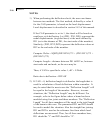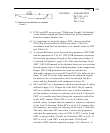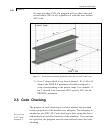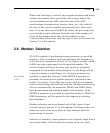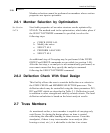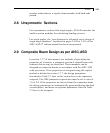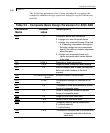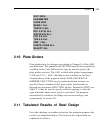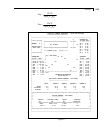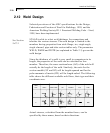
Section 2
2-19
When code checking is selected, the program calculates and prints
whether the members have passed the code or have failed; the
critical condition of the AISC code (like any of the AISC
specifications or compression, tension, shear, etc.); the value of
the ratio of the critical condition (overstressed for a value more
than 1.0 or any other specified RATIO value); the governing load
case, and the location (distance from the start of the member) of
forces in the member where the critical condition occurs.
Code checking can be done with any type of steel section listed in
Section 2.2 of this manual.
2.6 Member Selection
STAAD is capable of performing design operations on specified
members. Once an analysis has been performed, the program can
select the most economical section, i.e. the lightest section, which
fulfills the code requirements for the specified member. The
section selected will be of the same type section as originally
designated for the member being designed. A wide flange will be
selected to replace a wide flange, etc.. Several parameters are
available to guide this selection. If the PROFILE parameter is
provided, the search for the lightest section is restricted to that
profile. Up to three (3) profiles may be provided for any member
with a section being selected from each one. Member selection can
also be constrained by the parameters DMAX and DMIN which
limit the maximum and minimum depth of the members. If the
PROFILE parameter is provided for specified members, DMAX or
DMIN parameters will be ignored by the program in selecting
these members.
See Section
5.47.3
Member selection can be performed with all the types of steel
sections listed in Section 2.2 of this manual. For beams with cover
plates, the sizes of the cover plate are kept constant while the
beam section is iterated.
Selection of members, whose properties are originally input from a
user created table, will be limited to sections in the user table.



